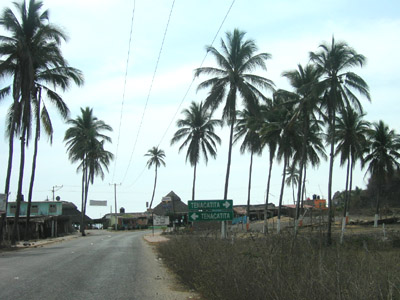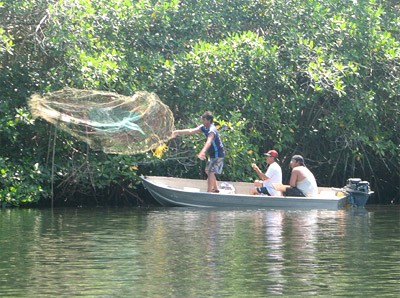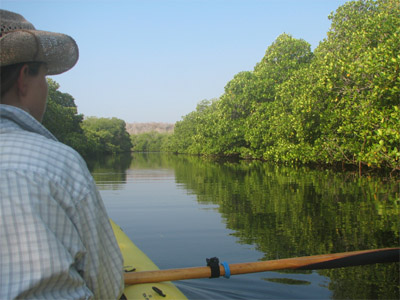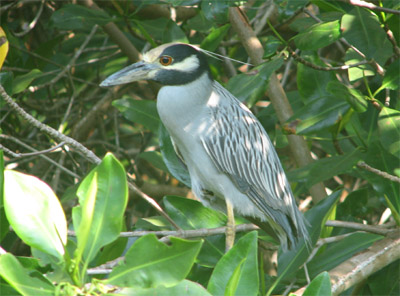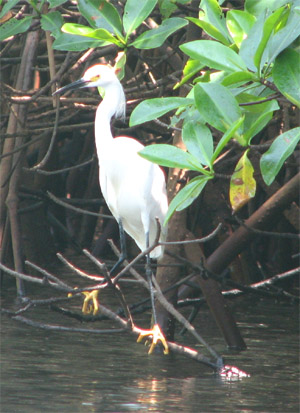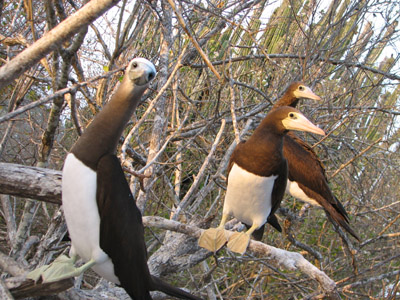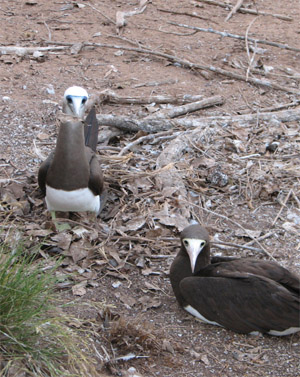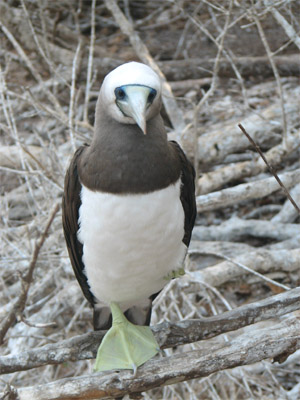Melaque
Wednesday, March 22nd, 2006One interesting thing about the Mexican coast is how drastically it has changed geographically although we have not traveled that great a distance. Baja to the mainland was an obvious one: dry desert rocky to moist misty palm tree. From Mazatlan to Banderas Bay, everything appeared very lush; the shores were layered with turquoise breaking waves, long yellow beaches, coconut plantations and various lushery, and then green fuzzy hills and hazy mountains in the distance. Cabo Corrientes, a meteorological line of demarcation between the more temperate northern half and the tropical southern half, has appeared visually opposite. Once we passed Corrientes, the water temperature dropped five degrees and the land reverted to desert with cacti and bare scraggly trees. There were still palms but they mainly clustered around seaside villages or mega mansions. Evidently it is dry season right now but still I’m surprised to see so many bare trees. As we head south, it is slowly growing greener, and warmer.
Melaque is a small town with a long beach lined with hotels and gift shops selling garish playa wear, inner tubes with Spongebob on them for the kiddies, coconut candies, straw hats of varying degrees of hillbilly, and dyed seashells. The town is fairly boring during the day; excepting a brief bit of early morning food activity, it pretty much shuts down by noon until dark. That’s when the street food venders come out to feed upon the flesh of the, um, nevermind. Around the zocalo in the center of town are zillions of taco stands, also hot dog, corn-in-a-cup, torta/hamburguesa, and cake/flan sellers. The cake people have a wide selection of gooey cakes decorated with colored frosting and poofs of whipped cream dabbed with fruity accents. The cake lady hovered over her cakes waving a homemade fly-discourager—a stick with a hank of plastic tassels taped to the end.
The anchorage itself is very nice and sheltered, although rolly if you are a monohull, it has been officially reported. There is a fair bit of noise from the beach both in the daytime (kids screaming, jet skiis using the boats in the anchorage as an obstacle course) and night (pumping music). There is a disturbing song popular lately that is sort of a weird traditional-style takeoff on Karma-Chameleon (as in Boy George). Featuring a perky tuba bass line and festive trumpets, the lyrics are a sort of oompa-beat “Cama cama cama came-meleon. Yo soy, el cameleon.†I actually hate this song after having the misfortune of hearing it performed live (super extended version with audience participation “QUIEN SOY??†“EL CAMELEON!!†“OTRA VEZ!!!â€); it stuck in my head for days and was very traumatic.
If you walk on the beach for 3-5 kilometers (depending upon where you start out), you end up in Barra/Barre/Barrio (we never got this straight; people seemed to call it different things), where there is a lagoon anchorage and fancy marina that includes access to a major chic hotel and a guy called the French Baker who makes daily rounds of both anchorage and marina to take orders for baked goods. Barre is the preferred hangout for cruisers, although the town is a bit contrived and sadly lacking in street food. The Barre night scene includes such novelties as a neon-lit “Blues Bar†filled with western tourists in sarong-inspired outfits drinking margaritas and wiggling their butts to something arguable not ‘blues’ (Steely Dan, say) blaring out all over the innocent street. I do give the place points for the French Baker (I mean, who wouldn’t); we went to the French Bakery coffee shop and partook of many tartlets, all of which were excellent. To think that such tartlets might be delivered right to your boat at anchor is, well, mind bending to say the least.
